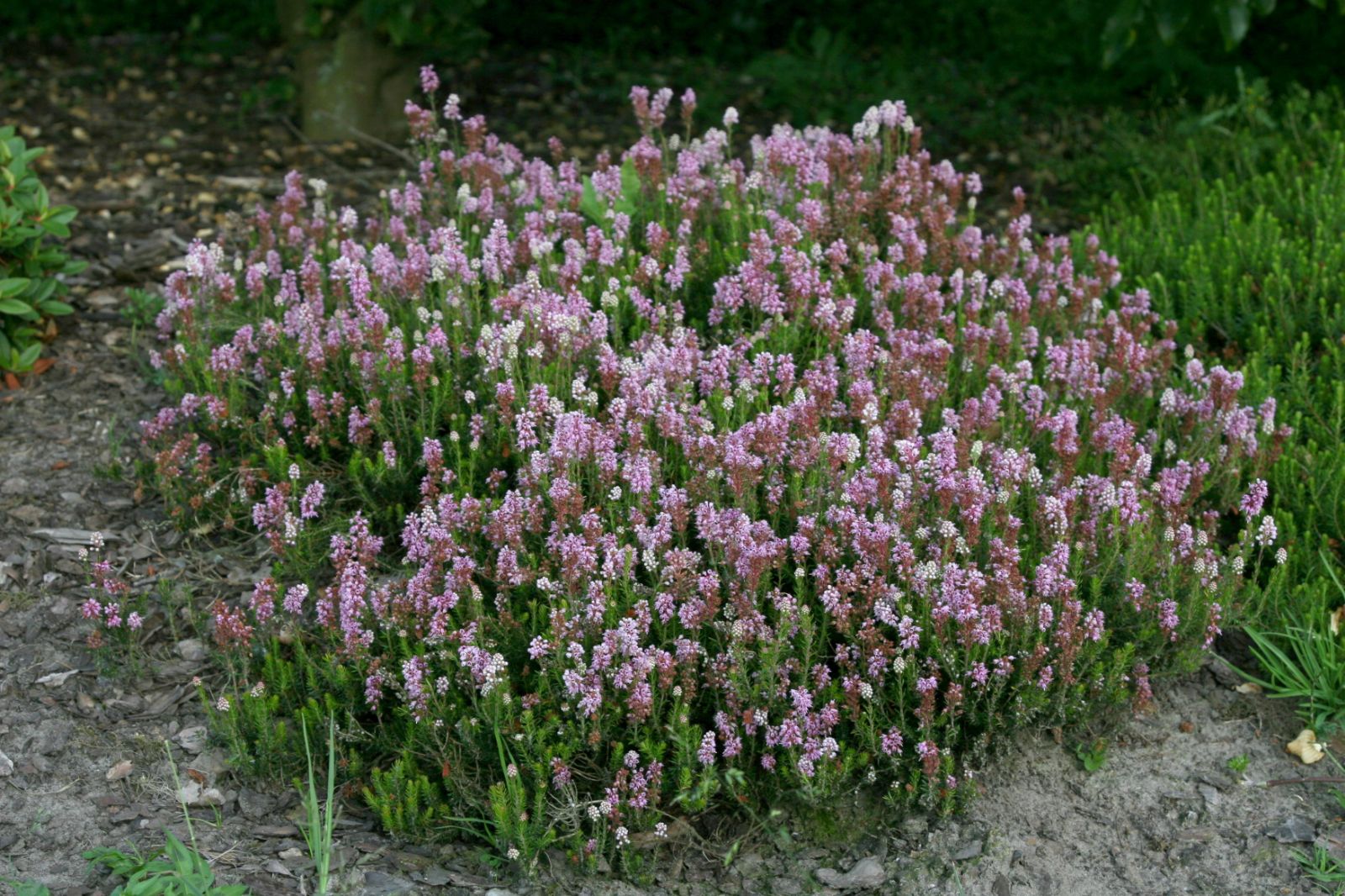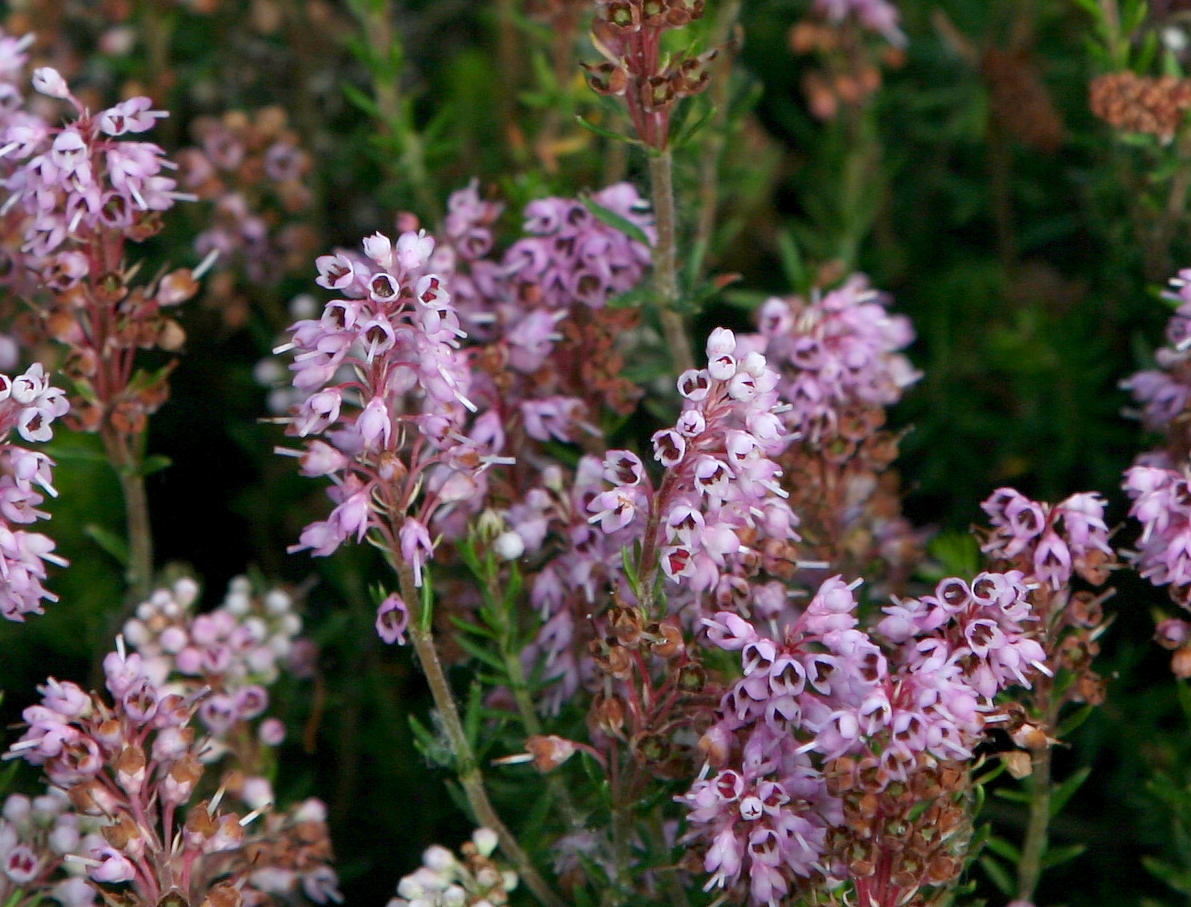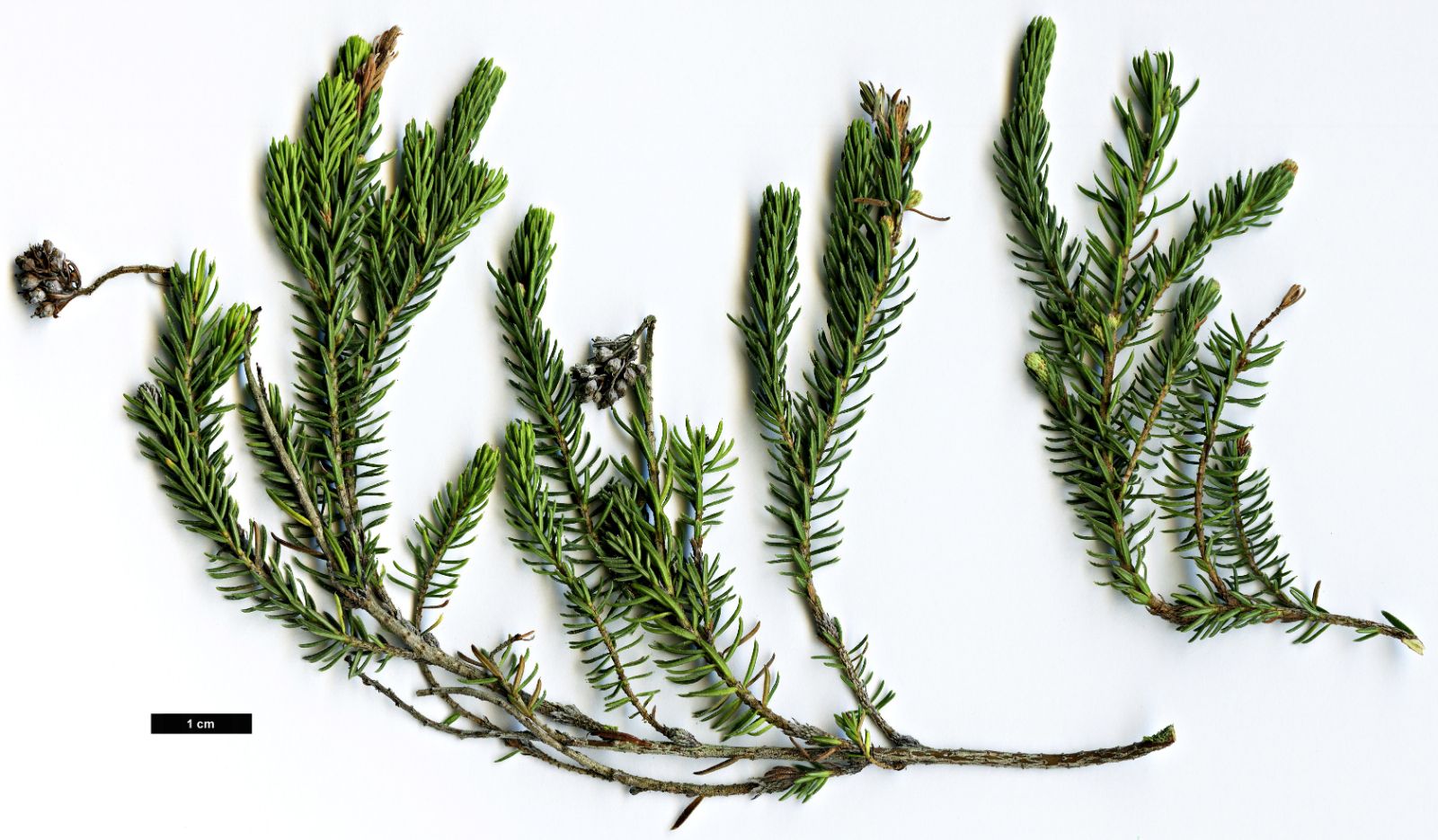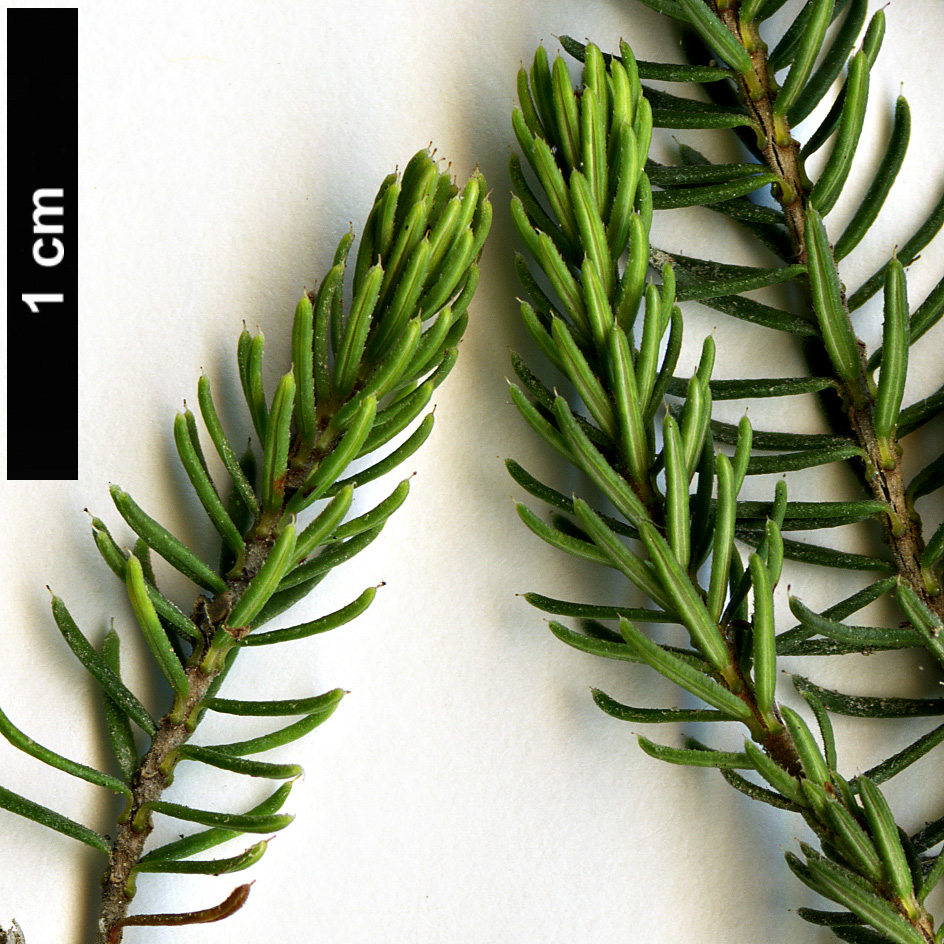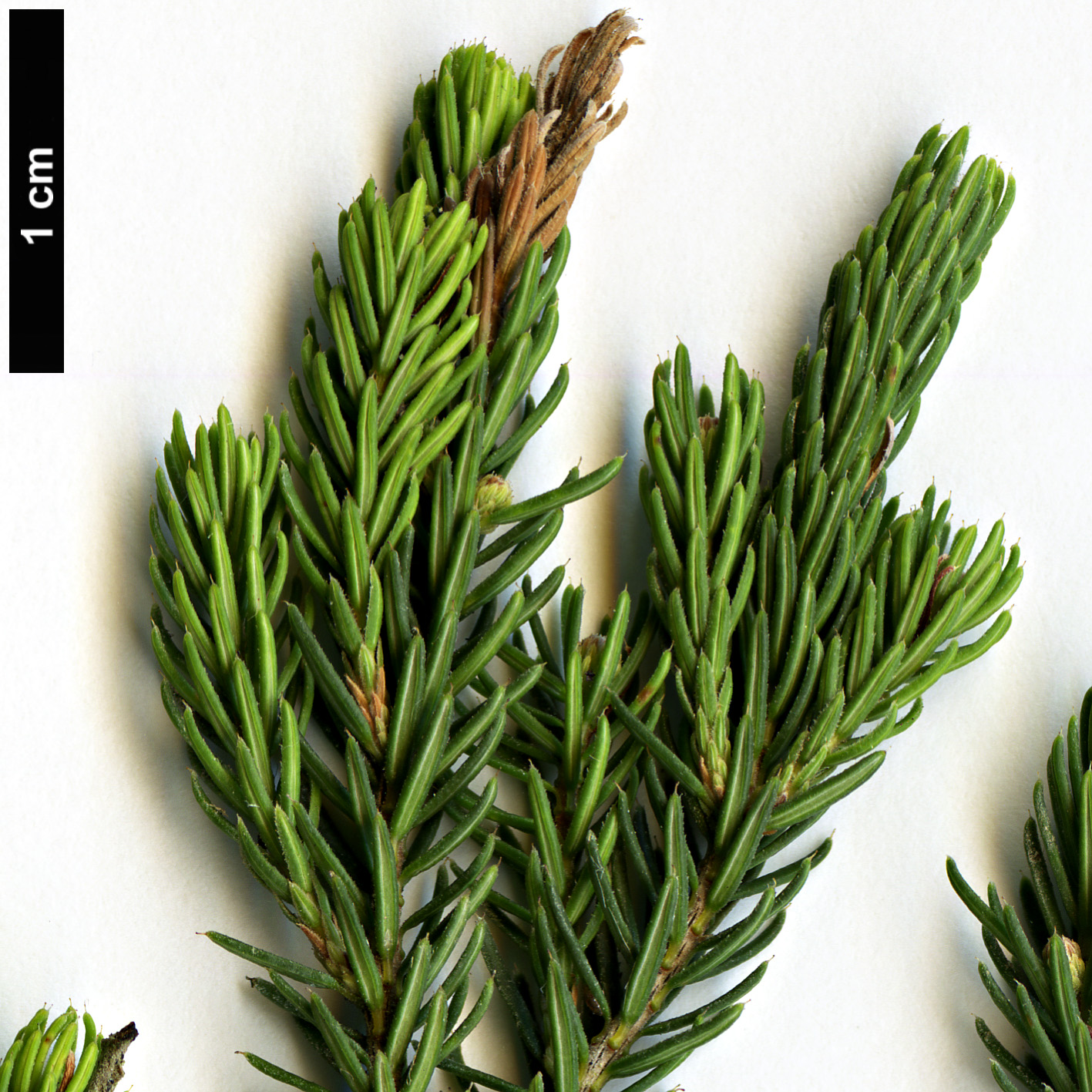Erica spiculifolia
Credits
New article for Trees and Shrubs Online.
Recommended citation
'Erica spiculifolia' from the website Trees and Shrubs Online (treesandshrubsonline.
Genus
Synonyms
- Bruckenthalia spiculifolia (Salisb.) Reichenb.
Other taxa in genus
- Erica andevalensis
- Erica arborea
- Erica australis
- Erica canaliculata
- Erica carnea
- Erica ciliaris
- Erica cinerea
- Erica × darleyensis
- Erica erigena
- Erica lusitanica
- Erica mackaiana
- Erica mediterranea
- Erica multiflora
- Erica pageana
- Erica scoparia
- Erica terminalis
- Erica tetralix
- Erica umbellata
- Erica vagans
- Erica × veitchii
- Erica × williamsii
Formerly the sole member of the genus Bruckenthalia, maintained as distinct from Erica by having the stamens united with each other at the base and adnate to the corolla.
A dwarf evergreen shrub about 9 in. high, forming dense tufts of erect, very leafy twigs, heath-like in appearance; branches slender, downy. Leaves spreading, much crowded, linear, 1⁄8 to 1⁄6 in. long, ending in a bristle; the margins recurved and more or less glandular-hairy; lower surface white, but nearly hidden by the recurved margins. Flowers densely packed in a terminal, erect raceme 1 in. or less long. Corolla bell-shaped, 1⁄8 in. long, with four rounded lobes, rosy; calyx similarly coloured but much smaller, and with pointed lobes. Stamens eight; seed-vessel globular, with the style and calyx persisting; flower-stalk 1⁄8 in. long. Bot. Mag., t. 8148.
Native of the mountains of E. Europe and Asia Minor, discovered by Sibthorp in 1802, near Bursa; introduced to Kew in 1888. It differs from other hardy ericas in the open-mouthed corolla. Commencing to bloom early in June, it continues for about a month. It is a dainty little plant, not particularly showy, but suitable for a nook with peaty soil in the rock garden and quite hardy. It may be increased by seed, which it ripens freely, and by cuttings treated as advised for hardy heaths. The flower-colour of seedlings varies from pale to deep pink, and a white form is known.


